This way each test participant interacts with one user interface. Examples of between-subjects design Here are a few examples of between-subjects design testing sessions categorized by the industry conducting the tests.

Learn How To Implement Your Participant Design In Pro Lab
First we will review the features of between-subjects factors and.

. Examples of Within-Subjects Designs from the Research Literature Example 1 Odgers C. For example imagine a within-subjects experiment in which a teacher is testing whether oral presentations improve with practice. In this case we would have two independent variables.
Like in the previous example your experiment will most likely be composed of single or multiple reading tasks and your stimuli will be text excerpts. The differences between the two groups would then be compared. An example of a bias in the study because the design of the study is leading to a consistent change in scores.
Both Within- Between-S IVs. Due to the nature of the research question your participant design will be a within-subject design. Using a within-subjects design Within-subjects studies are typically used for longitudinal studies as researchers can assess changes within the same group of subjects over an extended period of time.
For example if you were stratifying by location with three subgroups urban rural or suburban and marital status with five subgroups single divorced widowed married. Within-subjects design an experimental design in which the effects of treatments are seen through the comparison of scores of the same participant observed under all the treatment conditions. There are two possible ways of doing it.
For example teachers may want to give a pre- and postcourse survey of skills and attitudes to gauge how much both changed as a result of the course. 2 So one group of participants would receive one treatment while another group would receive a different treatment. L Caspi A Nagin D.
J Dickson N Poulton R Moffitt T. A within-subjects or repeated-measures design is an experimental design where all the participants receive every level of the treatment ie every independent variable. This within-subjects design can be compared to what is known as a between-subjects design.
For example MANOVA multivariate ANOVA differs from ANOVA as the former tests for multiple dependent variables simultaneously while the latter assesses only one dependent variable at a time. For example assume that in the case of our car-rental study we were also interested in knowing how participants younger than 30 perform compared with older participants. Another common example of a within-subjects design is medical testing where researchers try to establish whether a drug is effective or whether a placebo effect is in order.
Emilys study is an example of a within-subjects design which is sometimes called a repeated measures design. Explicit Memory in Amnesics vs. Examples of _____ effects include fatigue and practice.
Between-Subjects Within-Subjects and Mixed. A within-subjects design is more statistically powerful than a between-subjects design because individual variation is removed. Between-subjects versus within-subjects design Youre planning to study whether taking a nap your independent variable after a learning session can improve test scores your dependent variable.
Scores in later. For example if they saw the ad with the woman standing in the clothing store first Ad Version 1 that might communicate that your brand is about in-store customer service. You can use either.
Psychological Science 19 1037-1044. Is called a within-subjects design. For example assume a psychiatrist is looking for new medication to treat patients with Obsessive-Compulsive Disorder OCD.
For example in a candy taste test the researcher would want every participant to taste and rate each type of candy. Within-Subjects Designs Basic Within-Subjects Repeated-Measures Design. Advantages Disadvantages of Wi-Subjects Designs.
In a within-subjects design each participant experiences all conditions. You will need twice the amount of respondents that youd need for a within-subjects design this can make a between subjects design slower and more expensive. Age with 2 levels.
Data collection for within-subjects design sessions takes longer because each participant is taking part in multiple treatment conditions. For example if subjects complete a word-scramble task while listening to music and then complete another word-scramble task with no music the difference in their performance could be due. In a within-subjects design a procedure to minimize threats from order effects and time-related factors by changing the order in which treatment conditions are administered from one participant to another so that the treatment conditions are matched with respect to time.
Each student gives a presentation which she grades and then gives a second. It is possible that an experiment design is both within-subjects and between-subjects. This study design involves assigning different user interface to different test participant.
To achieve the same. Under 30 over 30. More than 1 IV.
Is it important to prevent early exposure to drugs and alcohol among adolescents. This study design involves exposing each test participant to all of the user. This type of experimental design is when one set of participants are tested more than.
The researchers in the crudest form of the test will give all of the participants. In a between-subjects design people are only assigned to a single treatment.
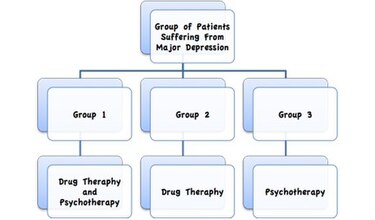
Between Group Design Wikipedia
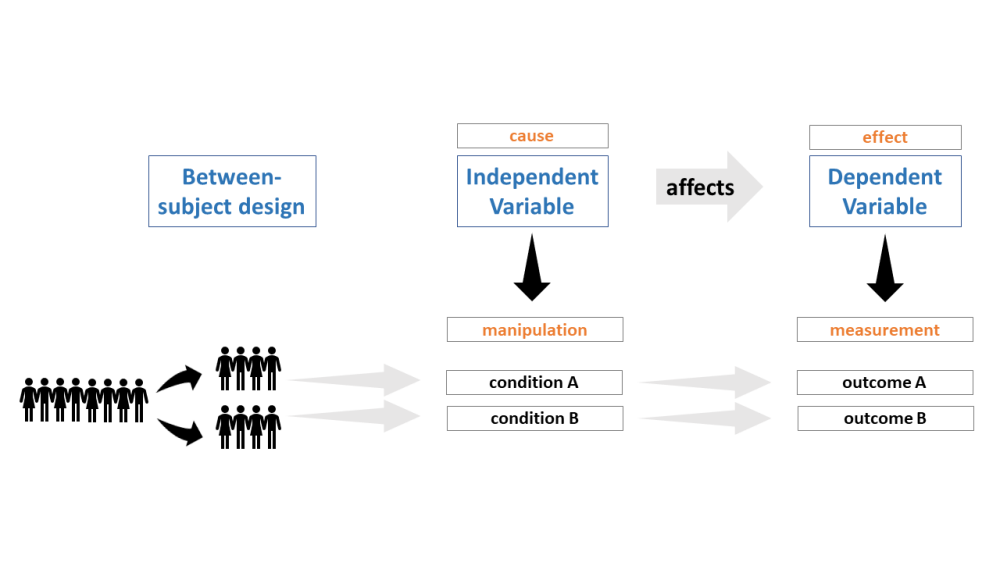
Learn How To Implement Your Participant Design In Pro Lab

Within Subjects Repeated Measures Design Experimental Psychology Jove
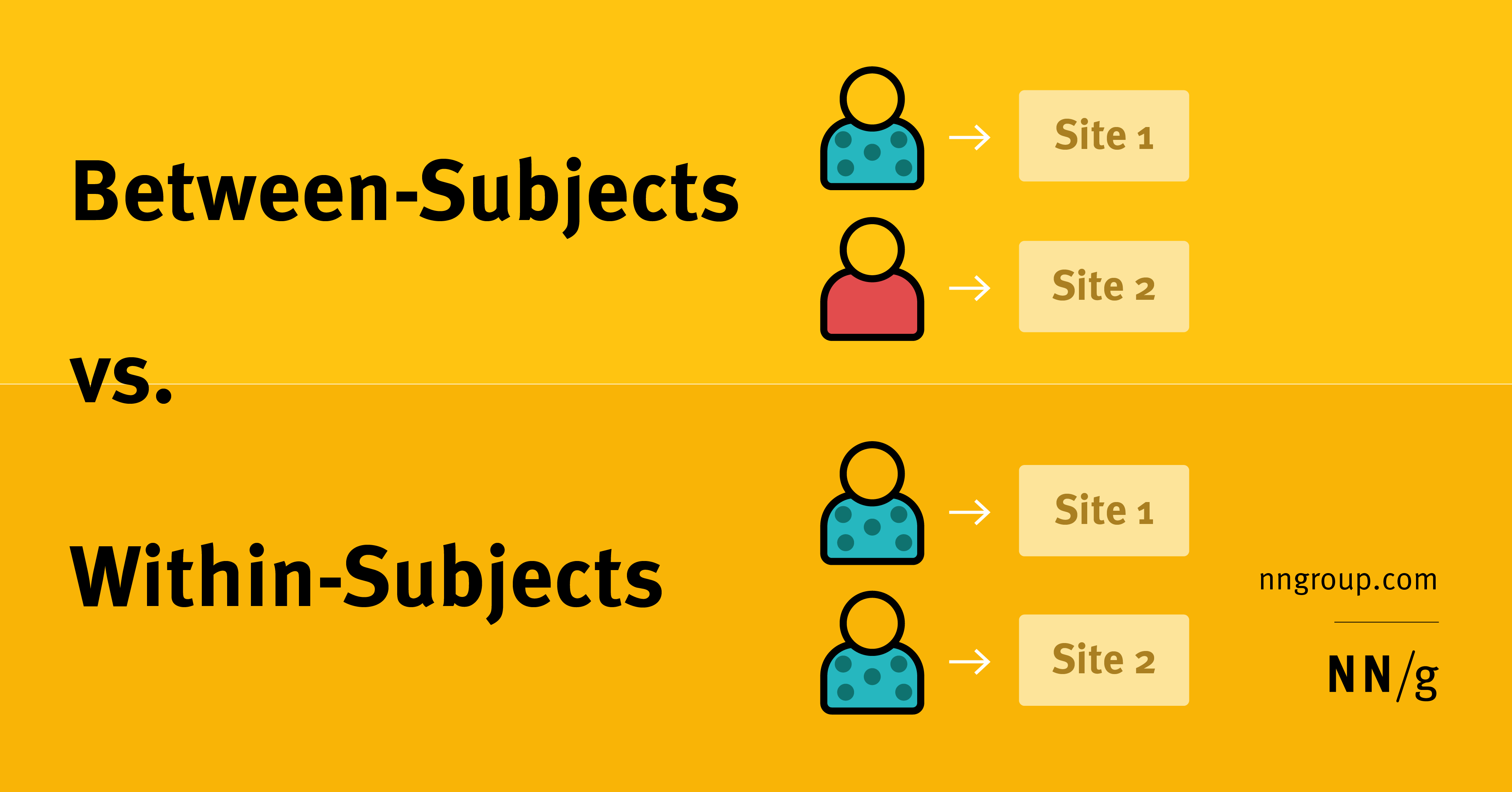
Between Subjects Vs Within Subjects Study Design

Within Subjects Design Explanation Approaches Examples

Within Subject Design Repeated Measures Design
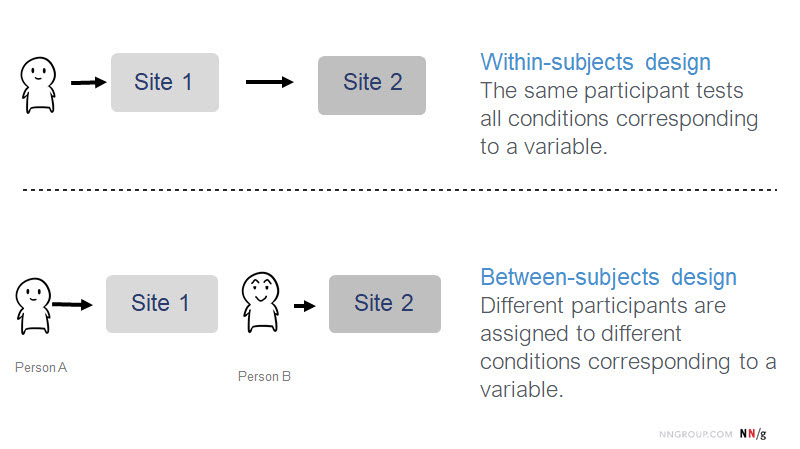
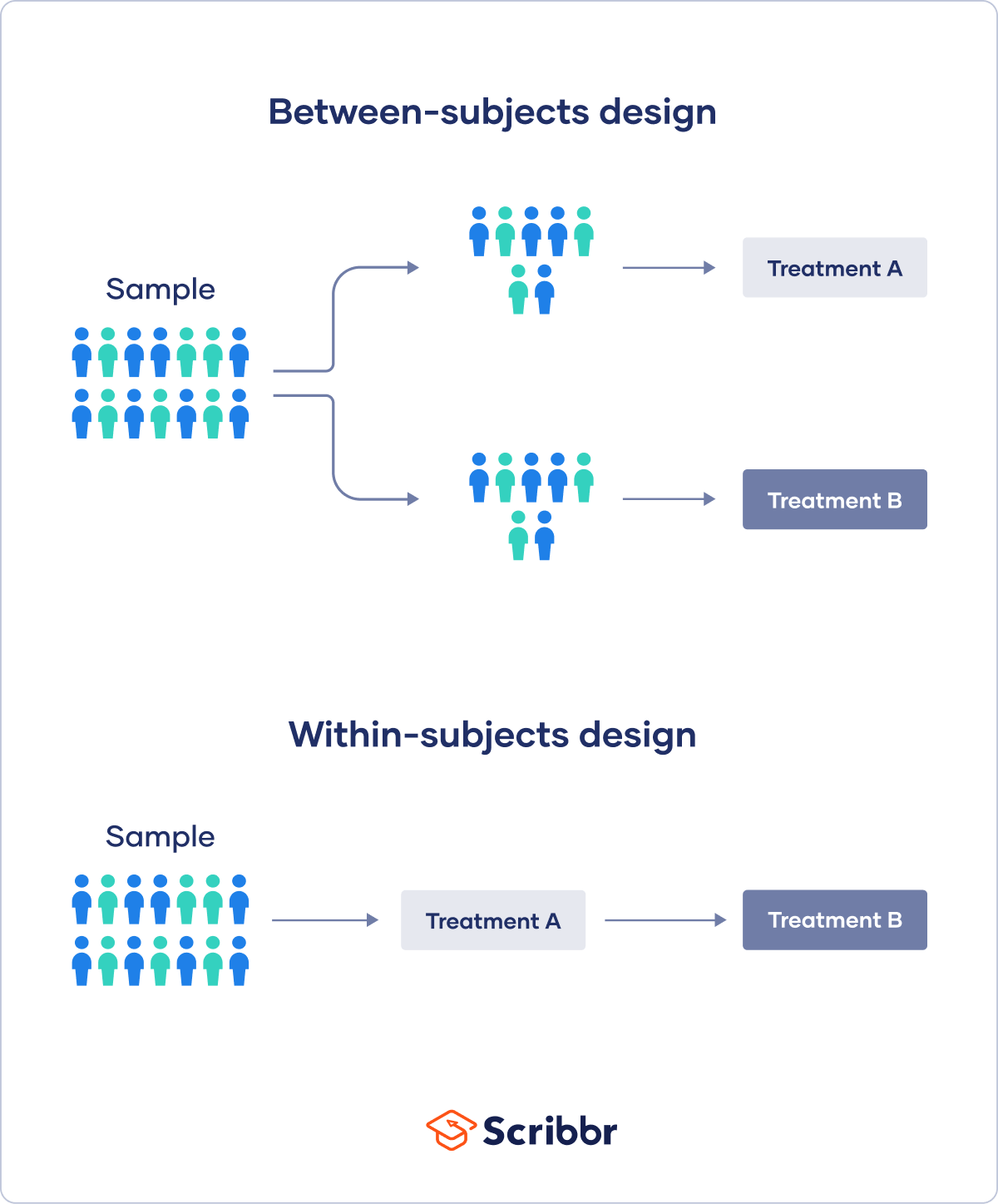
0 comments
Post a Comment